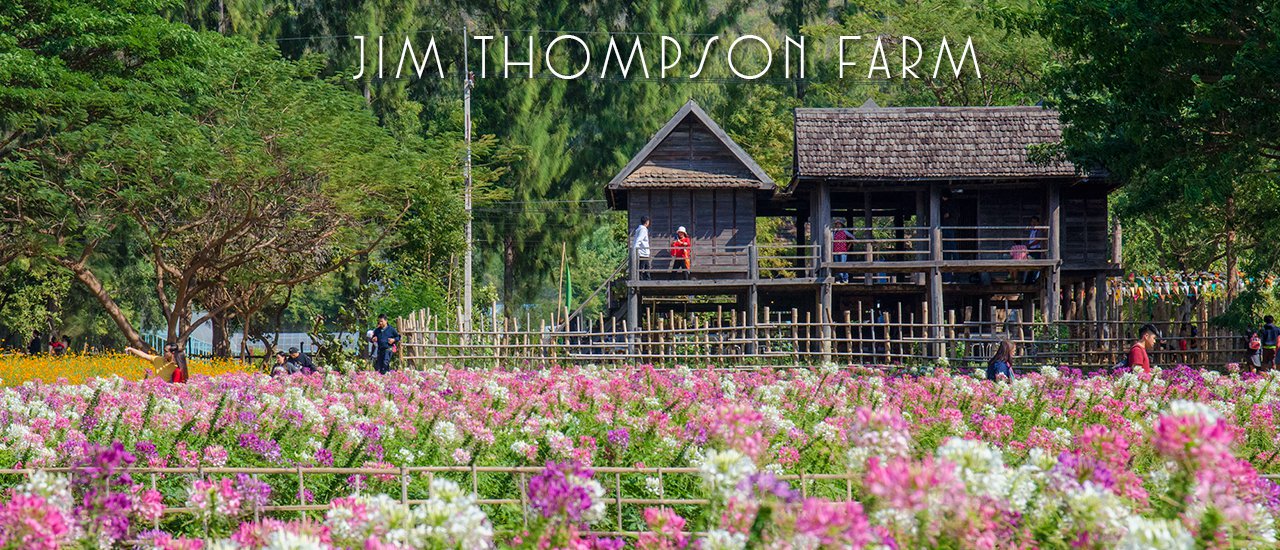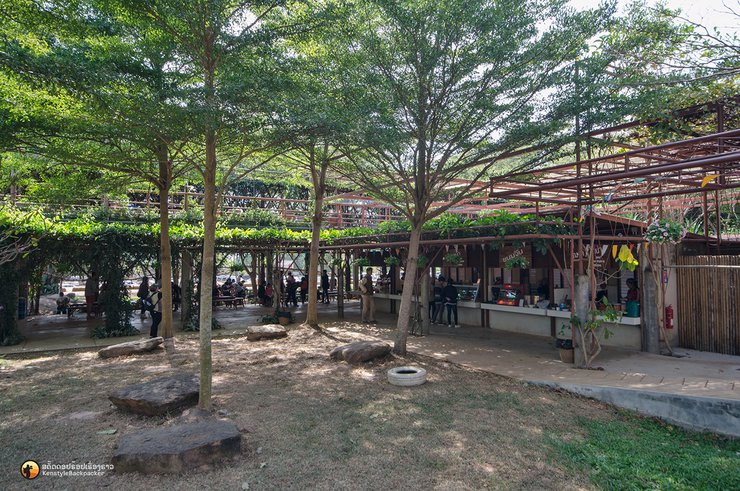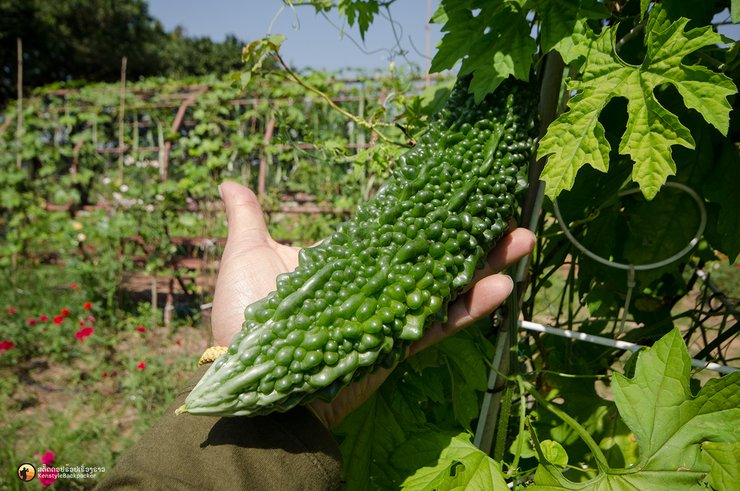The piercing chill of the early morning on December 19th, 2023, seeped through the thin blanket, sending shivers down my spine. The thermometer on my phone confirmed my suspicions: the temperature in Bangkok had plummeted to a brisk 17 degrees Celsius. Sleep eluded me, and the thought of cruising through the cool air in my car became irresistible. I roused myself from bed, informed my mother and sister of my impromptu outing, and set off on a northward journey. As I approached the Ayutthaya intersection, the melodious strains of a song about flowers filled the air, inspiring me to seek out a field of blooms. I steered my car towards Saraburi, then turned right onto the Mittraphap Highway, heading towards Khon Kaen. My destination: the Jim Thompson Farm.
The following is a translation of the provided text from Thai to English, adhering to the specified guidelines:
Every time I travel, I tend to use Google Maps, even though it sometimes leads me astray. This time, it took me on a route that I didn't realize was unsuitable for my vehicle. After passing Chokchai Farm, I made a U-turn and followed the app's directions towards Wang Nam Khieo via Nong Sarai district. However, after entering a forest road for about 50 meters, I had to turn back immediately due to the terrible condition of the road surface.
Returning to the entrance, I asked a vendor about the road ahead. She assured me that it was passable, claiming that only the initial section was bad. However, as I ventured deeper, the road worsened significantly. Surrounded by dense forest, I occasionally encountered oncoming trucks and noticed two or three cars following behind me, likely also relying on Google Maps.
With no other option, I continued driving, comforted by the vehicles behind me. After approximately 13 kilometers of bumpy and pothole-ridden roads, I finally reached the main road. While this route significantly shortened the distance and avoided heavy traffic near Sikhio, the rough terrain was only suitable for pickup trucks. The return trip via Sikhio, although time-consuming due to congestion, offered a smoother journey.
This experience highlights the potential drawbacks of relying solely on navigation apps, especially when venturing onto unfamiliar roads. While Google Maps can be a valuable tool, it's crucial to exercise caution and consider the limitations of both the app and your vehicle.
Jim Thompson Farm Tour is open from December 2, 2017 to January 7, 2018, from 9:00 AM to 5:00 PM (only a few days left).
Admission Fees
Weekdays:
- Adults: 180 THB
- Children: 130 THB
- Seniors (60+): 90 THB
Weekends:
- Adults: 220 THB
- Children: 160 THB
- Seniors (60+): 90 THB
If booked in advance with Thaiticket:
- Weekdays: Adults 150, Children 100, Seniors 90 (60 years and older)
- Weekends: Adults 180, Children 140, Seniors 90

"The Power of Water": A Journey Through the Mekong River's Legend
"เต๋อเติน เวินวัง - พลังแห่งน้ำ" (The Power of Water) serves as the central theme for this year's event. This phrase, originating from the Isan language, signifies the resounding power of water, echoing the legend of the "Red-Nosed Giant" who shaped the Mekong River. Consequently, water becomes the narrative thread throughout the event, starting from the ticket booth itself. Inspired by the Mekong River, the booth's bamboo structure evokes the river's essence.
The Isan legend recounts the origin of the Mekong River, attributing its creation to a giant named "Sala Keuk," distinguished by his prominent red nose. The legend's vivid imagery describes the giant's nose as so vast that children could play marbles within its nostrils. Notably, the absence of clothing in that era resulted in the giant's exposed genitals, referred to as "ของ" in Isan, dragging across the earth, carving a path that eventually became the Mekong River. This explains the shared name, "Mother of the River," used by both Lao and Isan communities.
For a deeper understanding of the legend that inspired this year's event, explore the full narrative at the following link: http://www.thaipoet.net/index.php?lay=show&ac=article&Id=538779425&Ntype=2 Interestingly, the legend intertwines with the histories of various locations across neighboring countries.


Internal transportation within the farm includes a shuttle service with a guide who provides commentary at each of the five designated stops across the 600-acre property.
1. Cosmos field and organic vegetable plot
2. Pumpkin Patch and Colorful Flower Field
The translation of "จุดที่ 3.หมู่บ้านอีสาน" is:
Point 3. Isan Village.
Point 4. Jim Village
The translation of "จุดที่ 5.ตลาดจิม" is "Point 5. Jim Market".
The first stop is the cosmos field and the organic vegetable plot. There is a canteen here if you are hungry. After passing through the gate, it is on the left-hand side, next to the organic vegetable plot. Try walking down and exploring the vegetable plot. You will see that each vegetable is much larger than usual. After finishing my meal at the organic vegetable plot, I walked to the car behind the ticket booth to take a ride to the second stop first, leaving the cosmos field for later, as the car will eventually loop back to the starting point anyway.





The second point of interest is a pumpkin patch and a field of colorful flowers. This area is a large open space called the "Lan Jing Khing Dang Daeng and Yak Sa Luek" with the Phaya Prab mountain range as its backdrop. The pumpkin patch, when decorated, resembles the "Wat Jan UFO" in Pathum Thani. Additionally, a red steel frame is used to represent the giant's nose from the legend, and pumpkins are placed for people to take pictures, symbolizing the legend of people playing "sa ba" in the giant's nostrils.




Next is a field of cosmos flowers, with other unidentified flowers scattered among them. However, the main attraction is the cosmos, which are in full bloom across the entire field.





This giant dew-catching jar, a testament to local ingenuity, harvests water from the air for agricultural use. Tourists can also climb to the top to enjoy panoramic views of the colorful flower fields, the Phaya Prab mountains, and the Lam Sam Lai reservoir. The first stop alone offers hours of photo opportunities. Despite the bright sunshine, the cool air keeps you comfortable.






Walk a little further and you will see the traditional Thai houses of the Isan region. From this point, if you stand on the balcony, you will see a field of flowers in full bloom. Everywhere you look, it's beautiful.





This house, which served as Nang Kaew's residence in the television drama "Nakee," offers a plethora of picturesque photo opportunities.

The provided text is an empty paragraph containing only a line break. As there is no actual content to translate, I cannot provide a translation in this instance.
Please provide a sentence or phrase for me to translate.





The next point is the third Isan village, which tells the story of the Isan people's way of life. It also collects the architecture of houses, customs and traditions, arts and culture, occupational equipment, and folk games of the Isan people. There is also a demonstration of silk reeling and the origin of silk. What is it made of? What are the steps involved in making silk? This point also has a food stall.











The traditional wisdom of Thai people in every step of silk production, from the beginning to the end, has made Thai silk famous all over the world.








Point 4, Jim Village, and Point 5, Jim Market, I had to skip because I ran out of time. I needed to allow at least 3 hours for the return trip to avoid arriving in Bangkok too late at night. Additionally, my mother was having trouble walking, and I didn't want to strain her. I took a quick detour to the cosmos flower field to capture some additional photos. I took a long ride from Point 3 to the starting point and then walked back to take pictures of the cosmos field. However, if you don't want to take a ride, you can walk from Point 5, Jim Market, and capture various angles until you reach the starting point.






For travel, it is best to follow the map on the Jim Thompson Farm website. Don't rely solely on Google Maps. Use it as a guide for traveling on main roads. For secondary roads, ask locals for directions and make decisions based on their advice if you don't have a map. If you are traveling during the New Year, be prepared for traffic and crowded tourist attractions. It might be better to choose a time after or before the New Year. I wish everyone a safe and happy New Year. This will probably be my last review of the year. Happy New Year!

- Thank you to all my friends who have come to watch, like and share. It's a great encouragement.
- Exchange information or ask for travel information. Fanpage: Studdoy: A Hundred Stories
- Follow our previous articles here: All travel trips
The provided text is an empty HTML paragraph tag with no content. Therefore, there is nothing to translate.
Please provide actual text or sentences for me to translate.
The sentence is already in English and does not require translation.
สตั๊ดดอย ร้อยเรื่องราว
Friday, November 8, 2024 4:29 PM




















